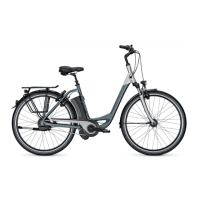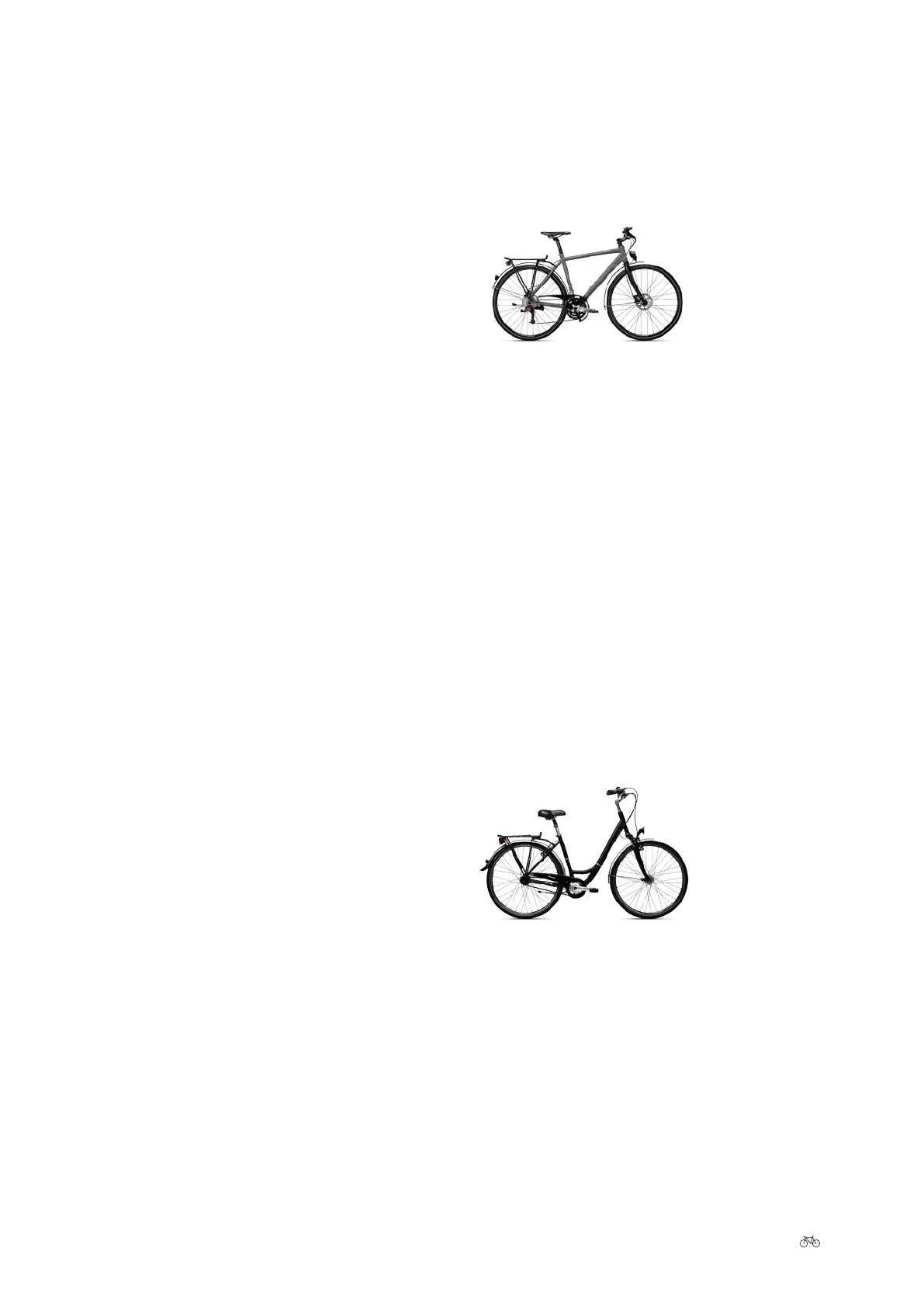I General User Manual 9
lations (StVZO) in Germany. When performing technical
modications, bear in mind that electrical components
must only be replaced by type-tested components.
6 Intended use
6.1 General information
Bikes are a means of transportation for one person. In
some countries, regulations exist governing the carrying
of passengers, such as the Road Trac Ordinance (StVO)
in Germany (tandem or bike child seat).
If you wish to carry luggage, you will require a suitable
xture on your bike. Bear in mind the maximum load-
bearing capacity of the carrier (see ➠
Chapter 30 "Techni-
cal data").
Not every bike type is suitable for every surface. Bikes are
not designed to cope with extreme stresses such as jump-
ing or riding over steps.
You must not take part in competitions with your bike. The
only exceptions to this are bikes that are oered explicitly
for use in competitions.
The information in this User Manual applies for all bike
types.
Any deviations for individual bike types are identied
accordingly.
Observe the relevant user manual om the individual
component manufacturers which can be found on the CD
or in the Internet. If you have any questions once you
have read the documentation, your specialist cycle shop
will be pleased to provide assistance.
Intended use also includes compliance with the operating,
maintenance and repair instructions provided in this User
Manual.
The manufacturer and cycle shop will not accept liability
claims should the bike not be used as intended.
6.2 Trekking bike / all-terrain bike
(ATB), if equipped in accordance
with the applicable road trac
licensing regulations
You may use these bikes on surfaced routes and in road
trac, providing they are equipped accordingly. They are
also suitable for gentle ooad riding, such as on country
lanes.
The manufacturer and cycle shop will not accept liability
claims
should the bike not be used as intended
. This par-
ticularly applies for non-observance of the safety informa-
tion and damage resulting for example om:
• overloading or
• incorrect repairs.
6.3 City, touring, sports, child's and
youngster's bike, if equipped in
accordance with the applicable road
trac licensing regulations
You can use these bikes in road trac and on surfaced
routes.
The manufacturer and cycle shop will not accept liability
claims
should the bike not be used as intended
. This par-
ticularly applies for non-observance of the safety informa-
tion and damage resulting (for example) om:
• ooad use,
• overloading or
• incorrect repairs.

